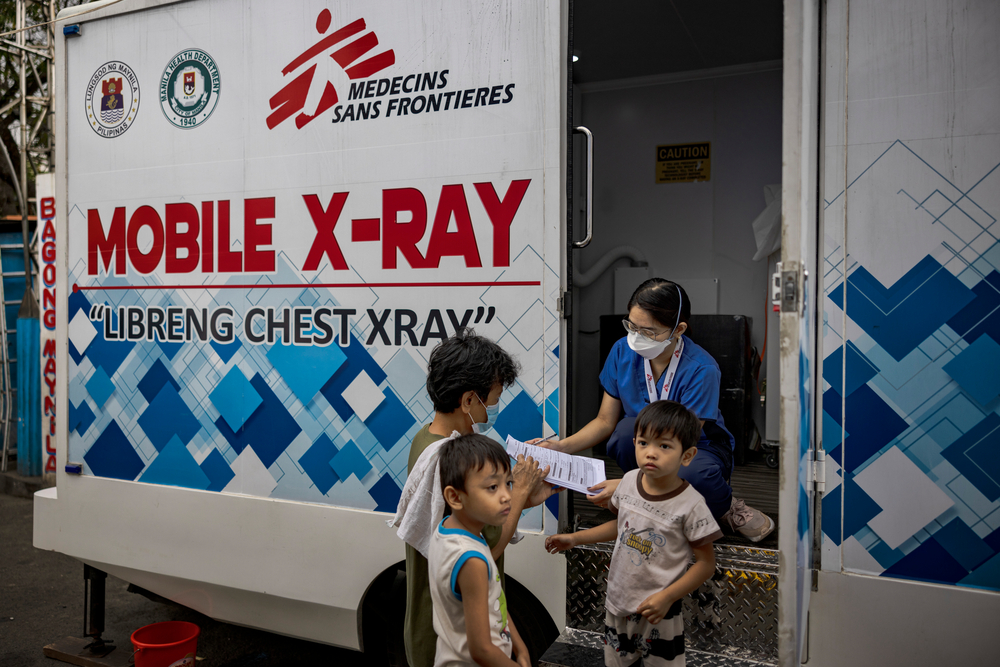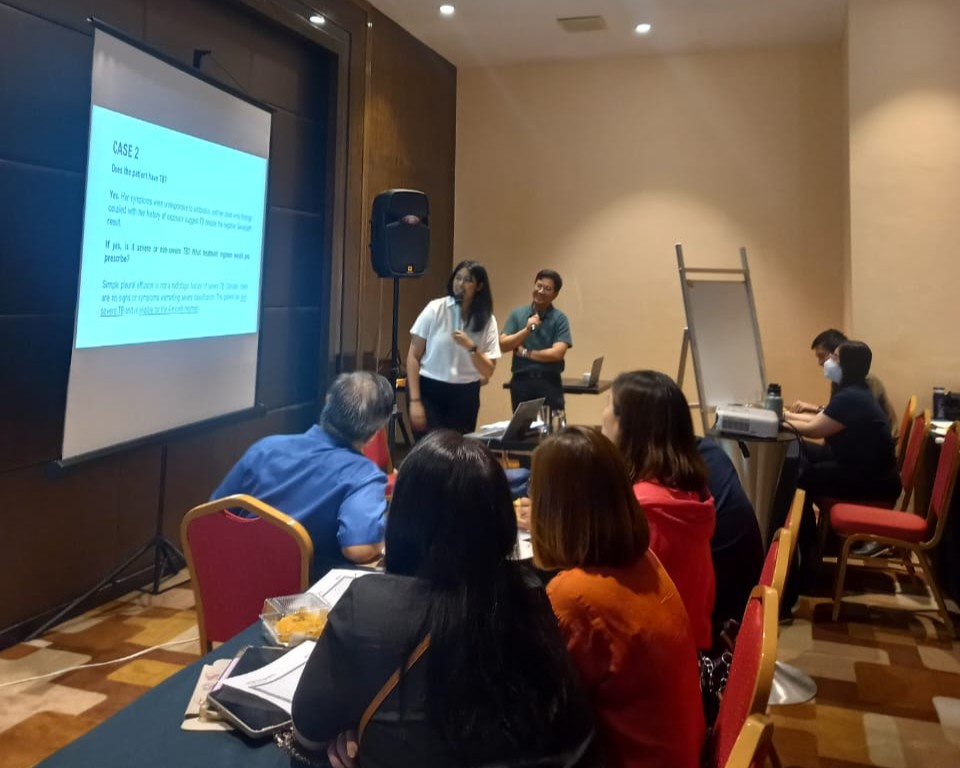
WITHIN four months, a child can complete a course of treatment for tuberculosis (TB), and be considered cured. This is the goal of the new national guidelines for the treatment of non-severe forms of TB in children, adopted by the Department of Health (DOH) based on recommendations from the World Health Organization (WHO). Previous studies have shown that this shorter regimen is as effective in eligible children as the previous treatment regimen, which lasted six months.
In Tondo, Manila, Doctors Without Borders / Médecins Sans Frontières (MSF) is supporting Manila Health Department (MHD) to implement the new treatment guidelines. Over a two-day training workshop, physicians and TB nurses from 15 health centers in Tondo districts 1 and 2 learned about chest x-ray interpretation, screening and diagnosis of TB in children, disease severity classification, and treatment.
New TB treatment a ‘big improvement’ for Pinoy kids
The Philippines is amongst a growing number of countries to include the WHO recommendation in the national guidelines, but one of the few to have started the rollout. The adoption of these guidelines can have a significant impact on the fight against TB, in a country with the fourth highest burden of the disease worldwide.
In Districts 1 and 2 of Tondo, Doctors Without Borders and MHD have been working together on a TB project since 2022. The project has been focused on screening, and treatment is implemented in collaboration with health centers. As of January 2025, the project has screened 38,465 people and diagnosed 1,826 patients with TB.
Once people identified with TB are linked to care in the health center, the household contacts—including children—are investigated for TB. Children are also identified by health centers when they present with symptoms of TB.
The new guidelines recommend the four-month treatment regimen 2HRZE/2HR for patients with non-severe drug-susceptible tuberculosis, aged three months to 16 years. This treatment regimen involves a two-month initial phase using four TB drugs, and a two-month maintenance phase, using two drugs.
The four-month regimen will be an improvement on many levels. According to Richard H. Castro, MD, MPH, of the TB Prevention and Control Section of MHD, “For sure the shorter regimen will benefit the fight against TB in the City of Manila. Less time for the duration of treatment is equivalent to lesser logistics and commodities consumption, lesser disease burden for the family, and faster recovery from illness, especially in a depressed area like Tondo.”
For the child and their family, it means a better treatment experience: fewer health visits are needed, there are fewer days on treatment, less exposure to drugs, and potentially fewer out-of-pocket expenses. Castro adds, “This is an important step in making treatment easier and faster for our patients in the City of Manila. This new treatment will help more children and adolescents recover from TB in a shorter period, which is a big improvement.”
Collaboration is key

The two-day training workshop is a collaboration between Doctors Without Borders, MHD, NTP, and the University of the Philippines National Institutes of Health (UP-NIH) to support the effective implementation of the new treatment regimen in Tondo.
The implementation of the new treatment regimen is part of the Doctors Without Borders TACTiC (Test, Avoid, Cure TB in Children) project. As part of the project, a study, conducted by Epicentre, Doctors Without Borders’ medical research and epidemiology satellite, and MHD, in partnership with the Institute of Child Health and Human Development (ICHHD) UP-NIH, aims to document the current rollout and assess feasibility and accessibility of the implementation of the new regimen in the Philippines and Uganda. This study will identify possible barriers and solutions to encourage further deployment of shorter regimens for children with non-severe drug-susceptible TB globally.
Valentina Carnimeo is an epidemiologist at Epicentre. She explains, “The TACTiC project plays a critical role in improving TB care for children, by simplifying diagnosis and treatment while integrating WHO’s latest recommendations into real-world settings. This applies both in Doctors Without Borders projects and other settings, particularly those without a TB focus where there is a significant burden of undiagnosed tuberculosis. By pushing for these changes in national health systems, TACTiC is working to ensure more children survive and recover from TB with better, more accessible care.”
According to Josephine G. Aldaba, MD, Research Assistant Professor I at UP-NIH ICHHD, “Conducting this study in the Philippines is an important step in identifying possible barriers in its implementation, particularly its acceptability among the parents of children with TB and among the healthcare workers and its effectiveness. This four-month regimen can potentially improve adherence to TB treatment.”
Dr. Castro adds, “Beyond providing the treatment itself, it’s also crucial to understand how the community accepts and supports this change. By working together and paying attention to how the community responds, we can make sure this treatment reaches every child and adolescent who needs it.”
